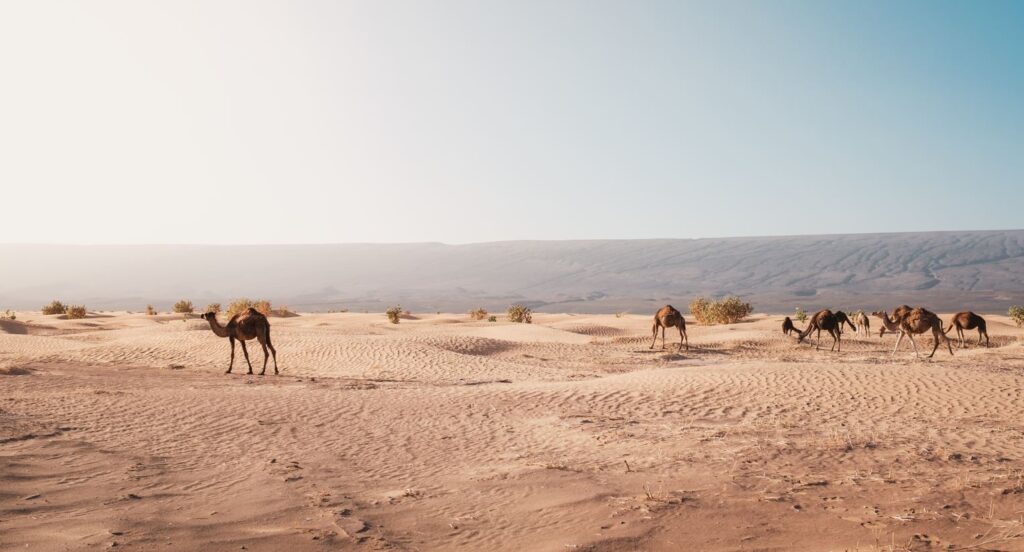How to Deal with Sun Exposure While Mountain Trekking

Mountain trekking offers breathtaking vistas, invigorating fresh air, and a unique sense of adventure. However, one of the greatest challenges trekkers face is dealing with sun exposure. Prolonged exposure to the sun’s ultraviolet (UV) rays can lead to sunburn, dehydration, and long-term skin damage. In this comprehensive guide, we will explore how to effectively manage sun exposure while enjoying your mountain trekking adventures, especially when trekking in Morocco.
Understanding the Risks of Sun Exposure
The sun’s rays are more intense at higher altitudes due to the thinner atmosphere, which absorbs less UV radiation. This means that trekkers are at a greater risk of sunburn and other sun-related health issues. The combination of altitude, reflective surfaces like snow, and extended periods outdoors can significantly increase UV exposure.
The Importance of Sun Protection
Protecting your skin from UV rays is crucial to prevent immediate and long-term health issues. Sunburn can be painful and debilitating, while prolonged exposure can increase the risk of skin cancer. Additionally, UV rays can cause premature aging and damage to your eyes.
Choosing the Right Sunscreen
When it comes to sunscreen, not all products are created equal. Here are some tips for choosing the best sunscreen for mountain trekking:
- SPF 30 or Higher: Look for sunscreens with an SPF of 30 or higher for optimal protection.
- Broad-Spectrum Protection: Ensure the sunscreen offers broad-spectrum protection against both UVA and UVB rays.
- Water-Resistant: Opt for water-resistant formulas, as you are likely to sweat during your trek.
- Reapplication: Reapply every two hours, or more frequently if you are sweating heavily or at higher altitudes.
Proper Application of Sunscreen
Applying sunscreen correctly is just as important as choosing the right one. Follow these steps for effective protection:
- Apply Generously: Use a generous amount to cover all exposed skin.
- Don’t Forget Sensitive Areas: Pay attention to often-overlooked areas like the ears, neck, and the back of your hands.
- Apply Before Heading Out: Apply sunscreen 15-30 minutes before you start trekking to allow it to absorb into your skin.
- Reapply Frequently: Reapply every two hours and after sweating, swimming, or towel drying.
Wearing Protective Clothing
Clothing is your first line of defense against the sun. Here’s how to choose the best sun-protective clothing:
- Long Sleeves and Pants: Wear long-sleeved shirts and long pants made from tightly woven fabrics.
- UPF-Rated Clothing: Look for clothing with an Ultraviolet Protection Factor (UPF) rating for additional protection.
- Wide-Brimmed Hats: A wide-brimmed hat can protect your face, ears, and neck from the sun.
- Sunglasses: Wear sunglasses that offer 100% UV protection to shield your eyes.
Timing Your Trekking Activities
The intensity of the sun’s rays varies throughout the day. To minimize exposure, plan your activities around the sun’s schedule:
- Early Morning or Late Afternoon: Aim to trek during the early morning or late afternoon when the sun is less intense.
- Avoid Peak Sun Hours: Try to avoid being outdoors between 10 AM and 4 PM, when UV radiation is at its strongest.
Hydration is Key
Staying hydrated is vital to counteract the effects of sun exposure. Dehydration can occur more rapidly at higher altitudes, so:
- Drink Plenty of Water: Carry enough water and drink regularly, even if you don’t feel thirsty.
- Electrolyte Solutions: Use electrolyte solutions or tablets to replace lost salts and minerals.
- Monitor Urine Color: Keep an eye on the color of your urine – it should be light yellow. Darker urine indicates dehydration.
Taking Breaks in the Shade
Whenever possible, take breaks in shaded areas to give your body a rest from the sun. This can help:
- Prevent Overheating: Resting in the shade helps to cool your body down.
- Reduce UV Exposure: It lowers the total amount of UV exposure you receive during the trek.
Recognizing Signs of Sun-Related Health Issues
It’s essential to recognize the signs of sun-related health issues to take immediate action. Be aware of:
- Sunburn: Red, painful skin that feels hot to the touch.
- Heat Exhaustion: Symptoms include heavy sweating, weakness, dizziness, nausea, and headache.
- Heat Stroke: A severe condition marked by confusion, rapid heartbeat, and fainting. It requires immediate medical attention.
Natural Remedies for Sunburn
If you do get sunburned, there are several natural remedies to help soothe your skin:
- Aloe Vera: Apply aloe vera gel to cool and moisturize the skin.
- Cold Compresses: Use cold compresses to reduce swelling and pain.
- Hydrate: Drink plenty of water to help your skin recover.
Conclusion
Mountain trekking is a rewarding activity that comes with its own set of challenges, including dealing with sun exposure. By taking the necessary precautions – using sunscreen, wearing protective clothing, staying hydrated, and timing your activities wisely – you can enjoy the beauty of the mountains while keeping your skin and health safe. Remember, proper preparation and awareness are key to making your trekking experience enjoyable and safe. Always respect the power of the sun and take steps to protect yourself from its harmful effects. Happy trekking!






